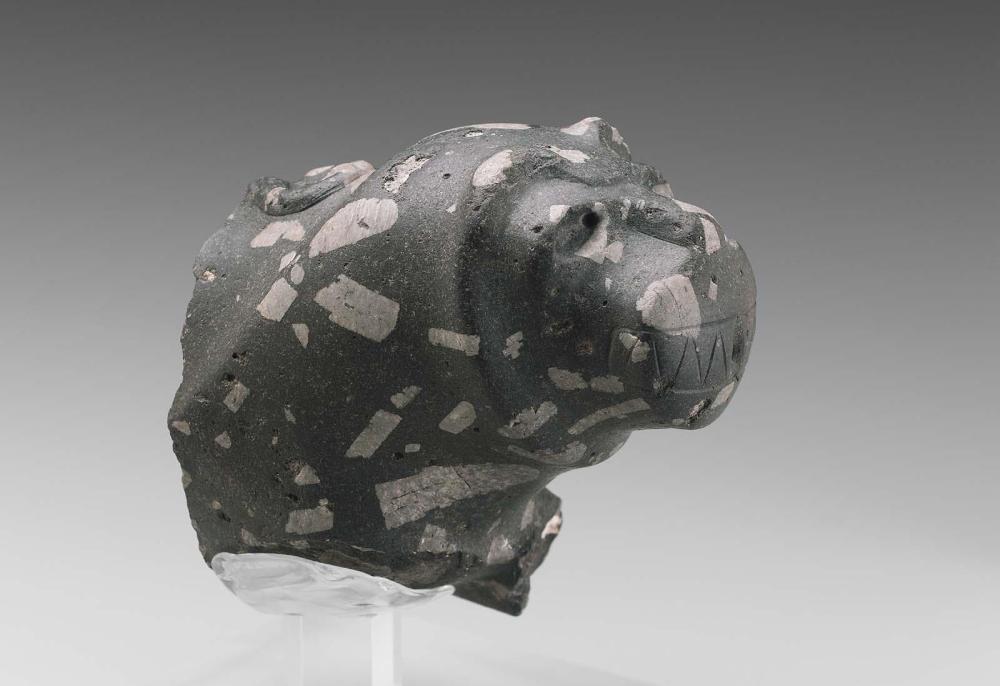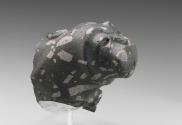Advanced Search
Forepart of a recumbent lion
Egyptian
Early Dynastic Period, Dynasty 1
2960–2770 B.C.
Findspot: Egypt, Possibly Gebelein
Medium/Technique
Andesite porphyry
Dimensions
Height x length: 13 x 13 cm (5 1/8 x 5 1/8 in.)
Credit Line
Egyptian Special Purchase Fund
Accession Number1980.73
CollectionsAncient Egypt, Nubia and the Near East
ClassificationsSculpture
This small yet imposing lion, is carved of hard andesite porphyry, a material otherwise known primarily in stone vessels, suggesting that the artist or his workshop may have emerged from that tradition. Figures of animals such as this one were probably dedicated as votive offerings in temples. Like other lion figures of the period, he is crouched as if about to spring, with his snout curled back in a snarl. The tail lies flat against the lion's back, and the curving tip remains visible behind the line of the mane.
DescriptionThis small yet imposing lion, dating to the very beginning of the pharaonic age, marks a crucial point in the development of Egyptian sculpture. While retaining the rectangular form of the block from which it was made, the hard stone was skillfully carved to convey the curves of the animal's body, the tension of its muscles, and the texture of its ruff and mane. The statuette is carved of hard andesite porphyry, a material otherwise known primarily in stone vessels, suggesting that the artist or his workshop may have emerged from that tradition. Figures of animals such as this one were probably dedicated as votive offerings in temples.
Although only the upper forepart of the lion has survived, his pose is clearly discernable. Like other lion figures of the period, he is crouched as if about to spring, with his head extended upward and forward and his snout curled back in a snarl. The ears poke up through the gently rounded mane. By contrast, the sculptor has rendered the bared teeth simply by means of crudely incised lines. Similarly stylized teeth are found on other contemporary lions, and despite their simple execution, they effectively convey the animal's ferocity. Originally, the deeply carved eyes were inlaid with another material, an unusual feature for animal sculptures of this date. The effect would surely have added both realism and intensity. The tail lies flat against the lion's back, and the curving tip remains visible behind the line of the mane.
Although only the upper forepart of the lion has survived, his pose is clearly discernable. Like other lion figures of the period, he is crouched as if about to spring, with his head extended upward and forward and his snout curled back in a snarl. The ears poke up through the gently rounded mane. By contrast, the sculptor has rendered the bared teeth simply by means of crudely incised lines. Similarly stylized teeth are found on other contemporary lions, and despite their simple execution, they effectively convey the animal's ferocity. Originally, the deeply carved eyes were inlaid with another material, an unusual feature for animal sculptures of this date. The effect would surely have added both realism and intensity. The tail lies flat against the lion's back, and the curving tip remains visible behind the line of the mane.
ProvenancePossibly from Gebelein. By 1980: with Edward H. Merrin Gallery, New York; 1980: purchased by the MFA from the Edward H. Merrin Gallery, New York.
(Accession Date: March 1, 1980)
(Accession Date: March 1, 1980)






